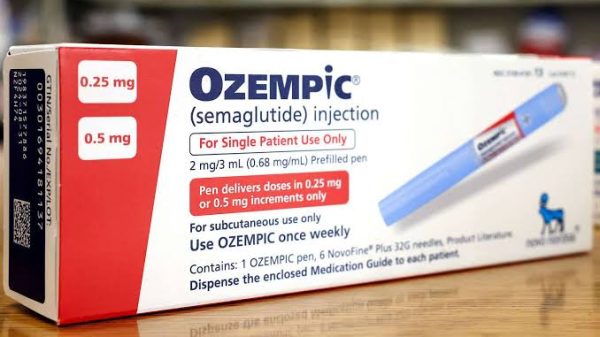
Advent Health Wesley Chapel in Florida was one of 21 Advent Health hospitals to receive an “A” grade from Leapfrog for patient safety. | Phil Galewitz | KFF Health News
A recent analysis from a patient safety monitoring organization claims that hospital-acquired illnesses, which significantly increased in frequency during the pandemic, have reverted to pre-pandemic levels. Researchers stress that it’s important to remember that infection rates were nothing to rejoice about prior to March 2020.
In addition to the somewhat positive news, the Leapfrog Group discovered that other indicators measuring patient happiness and safety had drastically decreased, most likely as a result of hospital staffing shortages and other difficulties brought on by the epidemic.
“We’re relieved and encouraged to see that hospital infections are rapidly declining after the pandemic spike, but we’re still very concerned about a number of serious issues in hospitals,” stated Leah Binder, president and chief executive officer of Leapfrog, a nationwide nonprofit organization established by major employers and other buyers.
Patient surveys following hospital visits found declines in experiences for the second year in a row in all states. Particularly significant drops were reported in “communication about medicines” and “responsiveness of hospital staff.” Preventable errors have been linked to these problems.
“Hospitals need to take a hard look at what they are unnecessarily continuing post-pandemic that is not helping patients,” Binder said.
“We’re relieved and encouraged to see that hospital infections are rapidly declining after the pandemic spike, but we’re still very concerned about a number of serious issues in hospitals,” stated Leah Binder, president and chief executive officer of Leapfrog, a nationwide nonprofit organization established by major employers and other buyers.
Infections classified as “hospital-acquired” are ones that may be prevented if staff members properly wash their hands and adhere to other infection-control protocols.
Methicillin-resistant Staphylococcus aureus, or MRSA, bloodstream infections linked to central lines, urinary tract infections linked to catheters, and central line-associated bloodstream infections are common hospital-acquired illnesses.
Hospital safety data is analyzed twice a year by Leapfrog, which revealed that all three rates peaked during the pandemic and continued to be high through the previous year’s rating until improving.
With information from 3,000 hospitals around the country, the study was issued on Monday and revealed:
- Nineteen percent of hospitals saw a decrease in all three illnesses.
- 66% of hospitals decreased the number of infections at least once and
- Infectious rates increased or remained unchanged in 16% of hospitals.
Leapfrog rates are based on the proportion of A-rated hospitals in each one and give hospitals letter grades based on safety records. (The organization’s website has ratings for specific hospitals.)
For the first time, Utah topped the list, with 52% of its hospitals receiving an A rating.
With no A-grade hospitals, the District of Columbia and four states—Vermont, Wyoming, Delaware, and North Dakota—came in last.
Almost 30% of hospitals nationwide received an A rating, followed by a B at 24%, a C at 39%, a D at 7%, and a F at fewer than 1%.
Generally, a state’s ranking depends on how effectively a few local hospital systems prioritize patient safety. “It’s not about money or resources or partisanship,” Binder stated. “It’s about do people actually care so much about safety that they put effort into it. It’s elbow grease.”
She stated that senior executives’ devotion in Utah has been evident, but not in Vermont. “I hope Vermonters will talk to their hospital leaders and ask for that commitment.”
In addition, Binder expressed concern about New York, which routinely scores in the lower half of the country. New York is a major teaching ground for medical and nursing students, therefore patient safety should be given special attention there, according to Binder.
According to Dr. William Scharf, executive clinical director of quality and safety at AdventHealth, a nonprofit, faith-based health system that operates 52 hospitals in six states in the Southeast, as well as Texas, Colorado, and Wisconsin, the number of A-grade hospitals this year is higher than it has ever been.
Advent received an A in 31 of the 42 hospitals Leapfrog evaluated, and he claimed that infection rates had now decreased nationwide from their pre-pandemic levels.
Scharf declared, “This does not happen by accident.” Advent hospitals usually publish the number of days since their last hospital-acquired infection, much like construction sites frequently report the number of days since their last accident.
Advent’s hospitals saw a surge in infections during the pandemic, but he said they chose to “not accept the new normal of COVID,” putting more of an emphasis on going “back to basics and back to baseline.”
Advent was dependent on visiting nurses during the pandemic, much like most hospitals, and saw a high rate of burnout-related turnover. Since then, they’ve worked to increase employee count, abandon agency nurses, enhance benefits, and highlight the company’s encouraging environment.
“We recognized that we had to do something different and we had to do something better,” Scharf said.
Studies have indicated that hospitals with more employees and better-quality ratings prior to the pandemic saw fewer errors during that tense period.
According to Dr. Pablo Moreno Franco, chair of the Department of Critical Care Medicine at Mayo Clinic Florida and a member of Leapfrog’s advisory board, turnover—particularly the leaving of experienced nurses—remains extremely high in many institutions and compassion fatigue has set in.
“Some of the staff that has remained may not have the same level of resilience and tolerance they once had,” Franco stated.
It is frequently experienced nurses that bring up concerns about patient safety, question the current system, and make recommendations for changes, he added. Because of the distance and technology required during the pandemic, he added, newer nurses—especially those educated during the outbreak—may not have as much practical, front-line experience or know how to interact with patients face-to-face as they could.
















































